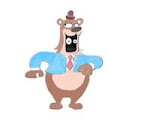
Monday, August 27, 2007
About Scenebook

Saturday, August 25, 2007
Breaking down scenes pt.1
When creating a scene, we have to break it down into components first:
- Story Goal
- Beginning
- Beats occur throughout the story
- Middle
- Turning point or climax
- Event
- End
Scene goal: The scene goal should be something you want the character achieve or realize. It can also be something you want the audience to feel about the character. The Scene Goal might even go against the goals of your character.
Here’s a poorly written scene goal: Bob wants to get a promotion.
Here’s a better one: We want the audience to know how much Bob wants to get a promotion.
Beginning: Most stories start in the middle of the action. The audience needs to be immersed in the details of the world, so that it seems real or plausible; but those details should never distract from the characters and their feelings. It is important to have the characters behave as naturally as possible for the audience to stay involved in the story.
Beats: Action between two or more characters.
*Though beats occur throughout the story, it will only be listed once.
Ex. Tom farted loudly. Sally frowned. Tom smiled.
(The beats are like inbetweens in animation. They are small incrementally but help build the story.)
Middle: This is the bulk of the scene, where Beats are building up towards the Climax.
Turning point or Climax: Where the Beats culminate into change.
Event: Events are changes in the things or people related to the story, and the story only. Changes in people’s opinions, new information, new obstacles, changes to relationships are all Events.
Ex. In Godfather pt II, Michael swore to never join his family in their crime syndicate, but when his father is killed, Michael becomes Godfather, the thing that he dreaded all his life.
*Events can be in the beginning, middle, or end. But we’ll have it at the end for right now.
End: The end of a scene determines where the next scene will begin. If the character reaches their goal, then the story must go in the direction of that change. Each new scene must lead closer to the goal of the Act, and each Act will in turn, lead toward the goal of the story.
Ex. In Godfather pt II, Michael Corelone’s father is killed, and he wants revenge. In the beginning of the story, the goal of each scene is to lead Michael toward wanting revenge. The rest of the story is then about him going after the men that took his father’s life. The story cannot deviate from this goal, because everything is already established.
Review
- Story Goal: What is the goal of the author, versus the goal of the character?
- Beginning: Story begins in the “middle of the action.”
- Beats: Action between character
- Middle: Beats build up toward the Climax
- Turning point or climax: The Beats culminate into the Event
- Event: When the story changes
- End: The ending determines where the next scene will begin.
